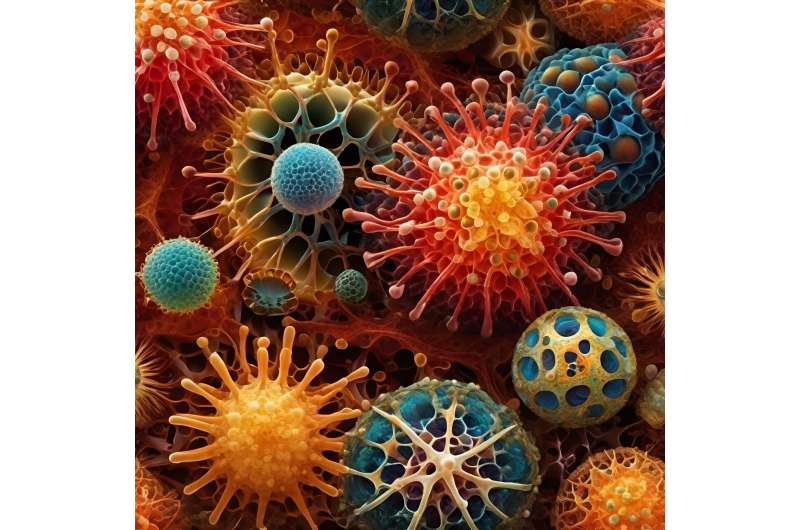This article has been reviewed according to Science X's editorial process and policies. Editors have highlighted the following attributes while ensuring the content's credibility:
fact-checked
peer-reviewed publication
proofread
Study shows the ability of some molecules to modify the surface of nanoparticles

Nanoparticles have unique properties that make them exceptional tools with a variety of applications, from medicine to electronics. One of the lesser-known facts about them is that their surface plays a crucial role in their behavior and functionality.
Research led by Vladimir Baulin, distinguished researcher at the Department of Physical and Inorganic Chemistry of the Universitat Rovira i Virgili and Wolfgang Parak, a lecturer at Universität Hamburg, has revealed that molecules called ligands can create unique local environments within the nanoparticle surface. The results of this research have been published in Accounts of Chemical Research.
The study has shown that ligands act as a protective layer that provides stability to the nanoparticles and prevents them from accumulating. But their influence goes beyond just stability.
According to this research, ligands can also change their surface charge by attracting or repelling ions. This modifies the effective charge of the nanoparticle and, therefore, its properties. This phenomenon is known as "Debye screening."
"This change in the charge can have a domino effect, and affect other properties that may initially have been overlooked. This local environment can have a significant impact on the behavior of the nanoparticle, altering its interactions with other molecules and affecting its functionality," adds Baulin.
Understanding the role of ligands and their ability to create different local environments is central if the research field is to determine how they can affect the behavior of nanoparticles in applications such as sensing, drug delivery or catalysis
In particular, this phenomenon of altering surface properties has significant implications for sensing applications. The concentration of the substances being measured can vary considerably if they are near the surface of the nanoparticle compared to the solution in general. Understanding and exploiting this variation can lead to the development of more accurate and sensitive detection technologies.
In addition, the role of ligands can also be exploited to modulate chemical reactions that take place near the surface of the nanoparticle. By carefully engineering ligands, environments can be created that selectively filter out molecules, accelerate reactions, or attract specific proteins, even at low concentrations.
These findings can have a significant impact on various fields, from health to chemical production and nanotechnology.
More information: Florian Schulz et al, Local Environments Created by the Ligand Coating of Nanoparticles and Their Implications for Sensing and Surface Reactions, Accounts of Chemical Research (2023). DOI: 10.1021/acs.accounts.3c00139
Journal information: Accounts of Chemical Research
Provided by University of Rovira i Virgili





















